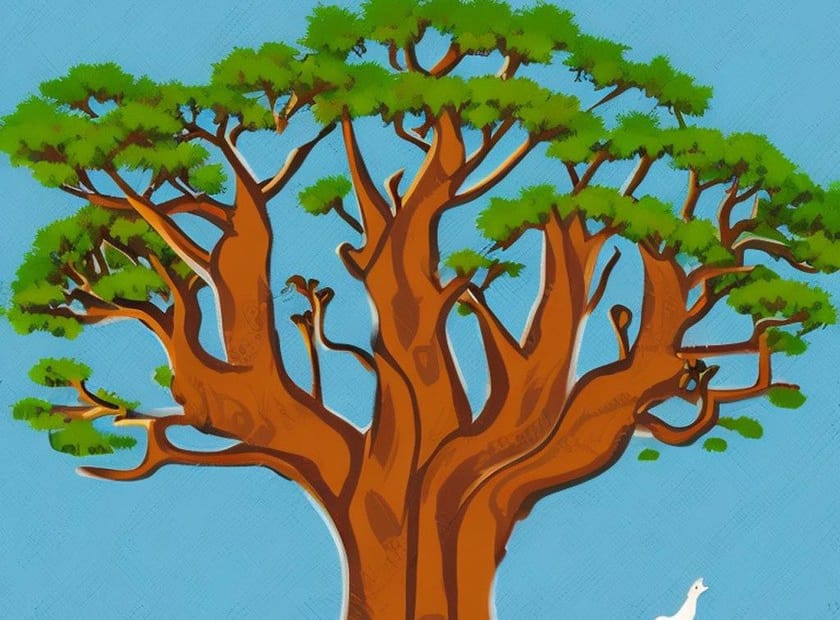Sacred trees in Africa
Sacred trees have played a significant role in African cultures for centuries. They are often seen as physical representations of the divine and are the focus of many rituals and ceremonies.
In many African cultures, trees are believed to be the homes of spirits or ancestors. People may offer food, drink, or other offerings to these spirits as a way of seeking their blessings or protection. Trees are also used as places of worship, and people may gather under the shade of a sacred tree to pray, sing, or perform other religious ceremonies.
In some African cultures, certain trees are believed to have healing properties. The bark, leaves, or fruit of these trees may be used to treat a wide range of ailments, from skin conditions to digestive issues. Some of these trees have even been used to create traditional medicines that are still used today.
In addition to their spiritual and medicinal significance, sacred trees also play an important role in African art and culture. They are often depicted in carvings, paintings, and other forms of traditional artwork, and their beauty and symbolism have inspired many artists over the years.
Unfortunately, many of Africa’s sacred trees are at risk due to deforestation, climate change, and other environmental threats. This has led to efforts to protect and preserve these trees, both for their cultural significance and for their ecological value.
Efforts to protect sacred trees in Africa include the establishment of nature reserves, the promotion of sustainable forestry practices, and the education of local communities about the importance of preserving their cultural heritage. By working together to protect these trees, we can ensure that they continue to play an important role in African culture for generations to come.

Examples of sacred trees in Africa and their symbolic significance
The Baobab Tree
The baobab tree is a revered and ancient tree species found throughout Africa and is considered sacred by many indigenous cultures. The tree is associated with life, strength, and the cycles of birth and death, and is often used in traditional medicine.
The Iroko Tree
The Iroko tree is considered sacred by many West African cultures and is associated with strength, stability, and protection. The tree is also believed to have spiritual powers and is often used in rituals and ceremonies.
The Mango Tree
The mango tree is considered sacred in many African cultures and is associated with fertility, abundance, and the cycle of life. Mango trees are often planted near homes and villages as a symbol of prosperity and protection.
The Neem Tree
The neem tree is considered sacred in many African cultures and is used in traditional medicine and rituals. The tree is associated with healing and protection, and its leaves and bark are believed to have powerful spiritual properties.
The Tamarind Tree
The tamarind tree is considered sacred in many African cultures and is associated with fertility, prosperity, and protection. The tree is often planted near homes and is believed to bring good luck and abundance.
These are just a few examples of the many sacred trees found in Africa, each with its own unique symbolism and significance. For many African cultures, trees are seen as living beings with their own spirits, and their presence and protection is considered essential for the well-being of the community.
Thank you for likes, shares and comments! 🌳🌴🌲🌵
Source OpenAI’s chatGPT Language Models, Dalle, AI trot and Fleeky
images Picsart and MIB
Invest in your future
Take time to learn
Embark on your journey in affiliate marketing and website creation alongside an incredible community and myself. Invest in your future by dedicating time to learn and earn. Take all the time you need to master the basics before aiming higher. Give it a try and sign up for free. You won't regret it! Discover the possibilities for yourself...


